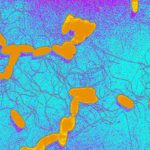Link to Pubmed [PMID] – 23341549
MBio 2013;4(1):e00452-12
UNLABELLED: The large outbreak of diarrhea and hemolytic uremic syndrome (HUS) caused by Shiga toxin-producing Escherichia coli O104:H4 in Europe from May to July 2011 highlighted the potential of a rarely identified E. coli serogroup to cause severe disease. Prior to the outbreak, there were very few reports of disease caused by this pathogen and thus little known of its diversity and evolution. The identification of cases of HUS caused by E. coli O104:H4 in France and Turkey after the outbreak and with no clear epidemiological links raises questions about whether these sporadic cases are derived from the outbreak. Here, we report genome sequences of five independent isolates from these cases and results of a comparative analysis with historical and 2011 outbreak isolates. These analyses revealed that the five isolates are not derived from the outbreak strain; however, they are more closely related to the outbreak strain and each other than to isolates identified prior to the 2011 outbreak. Over the short time scale represented by these closely related organisms, the majority of genome variation is found within their mobile genetic elements: none of the nine O104:H4 isolates compared here contain the same set of plasmids, and their prophages and genomic islands also differ. Moreover, the presence of closely related HUS-associated E. coli O104:H4 isolates supports the contention that fully virulent O104:H4 isolates are widespread and emphasizes the possibility of future food-borne E. coli O104:H4 outbreaks.
IMPORTANCE: In the summer of 2011, a large outbreak of bloody diarrhea with a high rate of severe complications took place in Europe, caused by a previously rarely seen Escherichia coli strain of serogroup O104:H4. Identification of subsequent infections caused by E. coli O104:H4 raised questions about whether these new cases represented ongoing transmission of the outbreak strain. In this study, we sequenced the genomes of isolates from five recent cases and compared them with historical isolates. The analyses reveal that, in the very short term, evolution of the bacterial genome takes place in parts of the genome that are exchanged among bacteria, and these regions contain genes involved in adaptation to local environments. We show that these recent isolates are not derived from the outbreak strain but are very closely related and share many of the same disease-causing genes, emphasizing the concern that these bacteria may cause future severe outbreaks.
